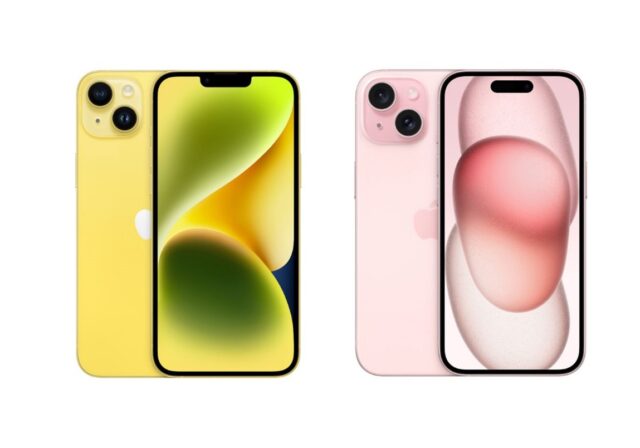
iPhone 14 vs. iPhone 15: A Detailed Comparison
Both the iPhone 15 and iPhone 15 Plus introduce Dynamic Island for real-time alerts and activities, enhanced displays for greater brightness, and the convenience of USB-C connectivity. Additionally, they deliver swifter performance thanks to the A15 Bionic chip, along with several notable camera improvements, notably a brand-new 48MP primary sensor.
Meanwhile, the iPhone 14 remains a formidable choice, now available at a reduced price, saving you $100. While the ultimate decision of which iPhone to purchase rests with you, we are committed to equipping you with all the essential details comparing the iPhone 15 and iPhone 14, enabling you to make the most informed choice based on your unique requirements.
Here is a detailed comparison of the iPhone 14 and iPhone 15, based on the latest rumours and reports:
| Feature | iPhone 14 | iPhone 15 |
| Display | 6.1-inch Super Retina XDR OLED, HDR10, Dolby Vision, 1000 nits (HBM), 2000 nits (peak) | 6.1-inch Super Retina XDR OLED, HDR10, Dolby Vision, 800 nits (HBM), 1200 nits (peak) |
| Processor | A15 Bionic chip | A16 Bionic chip |
| Ram | 6GB | 6GB |
| Storage | 128GB, 256GB, 512GB, 1TB | 128GB, 256GB, 512GB, 1TB |
| Rear Camera | 12MP wide + 12MP ultrawide | 48MP wide + 12MP ultrawide |
| Front Camera | 12MP | 12MP |
| Battery | 3279 mAh | 3349 mAh |
| Operation System | iOS 16 | iOS 17 |
Design And Build:
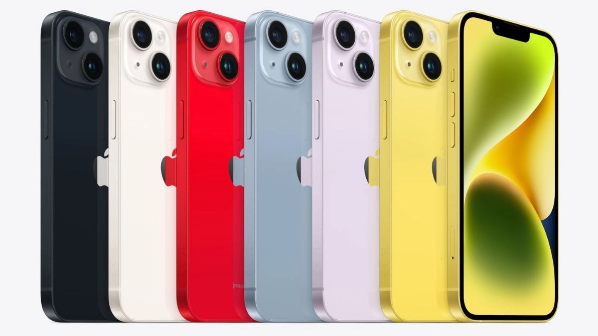
In terms of design, the Apple iPhone 14 closely resembled its predecessor, the iPhone 13. It featured a sleek combination of aluminium and glass for its body, retaining the familiar notch at the front. Interestingly, the iPhone 14 was notably lighter than the iPhone 13.
On the other hand, the Apple iPhone 15 introduces several significant design alterations. Most notably, Dynamic Island is now available in the non-Pro model, replacing the traditional notch with an elongated hole. This innovative design change allows for the display of notifications, battery status, and other crucial information directly within this area. Furthermore, a much-anticipated addition is the USB-C port, a feature many users had been eagerly awaiting. Additionally, the iPhone 15 boasts thinner bezels, contributing to a more immersive screen experience. Another noticeable shift is the replacement of the glossy finish with a soft satin touch on the rear panel of the device, enhancing both aesthetics and grip.
Display
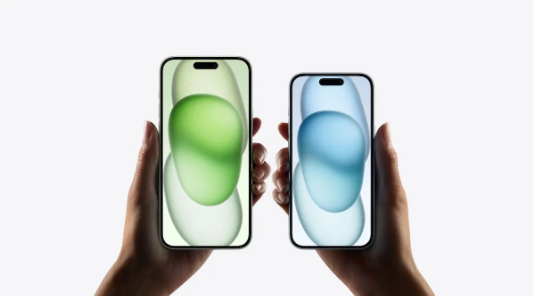
The Apple iPhone 14 boasts a stunning 6.1-inch Super Retina XDR display, which is undeniably exceptional. Apple’s commitment to enhancing the display experience with each new release is evident, and this year, even though the screen size remains unchanged, there have been a few noteworthy improvements. The Apple iPhone 15’s display is now doubly dazzling, featuring an impressive peak brightness of 2000 nits. Furthermore, the addition of a ceramic shield enhances the display’s durability.
When it comes to the refresh rate, both the iPhone 15 models maintain a consistent 60Hz refresh rate. Additionally, they continue to utilize the acclaimed Super Retina XDR display technology.
Performance And Storage
Performance has consistently been a hallmark of iPhones, and the iPhone 15 continues this tradition admirably. As observed, the iPhone 14 is equipped with the A15 Bionic chip and a 6-core processor, akin to the configuration found in the iPhone 13 Pro. Consequently, the graphics and gaming performance of the iPhone 14 are truly exceptional.
In contrast, the iPhone 15 arrives with the Apple A16 Bionic Chip, previously featured in last year’s Pro models. This significant upgrade signifies that the performance of this year’s iPhone surpasses that of its predecessor by a considerable margin, promising an even more impressive user experience.
iPhone 15 vs. iPhone 14 comparison: camera
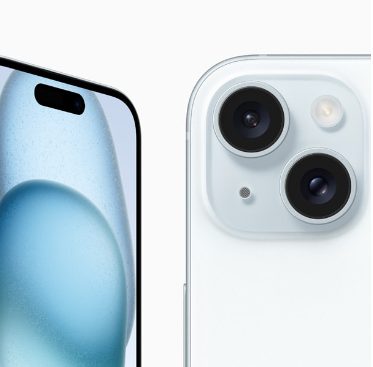
One of the standout camera enhancements of the iPhone 15 is its 48MP primary sensor, featuring “optical quality 2x telephoto” capabilities. Essentially, this means the phone employs a cropping technique on the main sensor. With a greater number of pixels (and thus more data) to process, the outcome is reported to be on par with the output of a dedicated telephoto lens, delivering impressive telephoto-style images.
The new camera setup on the iPhone 15 is also capable of clicking next-gen portrait photos. It captures more depth data even if you are not taking a portrait shot. This lets you apply the bokeh effect later on from the photos app. These are some features missing on iPhone 14’s 12MP main plus 12MP ultrawide combo.
Although the iPhone 15 also has a similar ultrawide snapper, it is said to offer improved night mode and HDR shots.
| Rear Camera | iPhone 14 | iPhone 15 |
| Camera setup | dual | dual |
| Resolution | 12 MP f/1.5, Wide Angle, Primary Camera
(26 mm focal length) 12 MP f/2.4, Ultra-Wide Angle Camera (13 mm focal length) |
48 MP f/1.6, Wide Angle, Primary Camera
(26 mm focal length, 1µm pixel size) 12 MP f/2.4, Ultra-Wide Angle Camera (13 mm focal length) |
| Sensor | Sensor-shift Image Stabilization | Sensor-shift Image Stabilization |
| Autofocus | Phase Detection autofocus, Dual Pixel autofocus | Phase Detection autofocus, Dual Pixel autofocus |
| OIS | ✅ | ✅ |
| Flash | LED Flash | Dual-color LED Flash |
| Image Resolution | 4000 x 3000 Pixels | 8000 x 6000 Pixels |
| Video Recording | 4K@24/25/30/60fps, 1080p@25/30/60/120/240fps, HDR, Dolby Vision HDR (up to 60fps), Cinematic mode (4K@30fps), stereo sound rec. | 4K@24/25/30/60fps, 1080p@25/30/60/120/240fps, HDR, Dolby Vision HDR (up to 60fps), Cinematic mode (4K@30fps), stereo sound rec. |
| Camera Features | 5 x Digital Zoom
2 x Optical Zoom Auto Flash Face detection Touch to focus |
10 x Digital Zoom
Auto Flash Face detection Touch to focus |
| Front Camera | iPhone 14 | iPhone 15 |
| Camera setup | Single | Single |
| Resolution | 12 MP f/1.9, Wide Angle, Primary Camera
(23 mm focal length, 3.6″ sensor size) |
12 MP f/1.9, Wide Angle, Primary Camera
(23 mm focal length) |
| Autofocus | ✅ | ✅ |
| Flash | Retina Flash | Retina Flash |
| Video Recording | 3840×2160 @ 24 fps
1920×1080 @ 30 fps |
3840×2160 @ 24 fps
1920×1080 @ 30 fps |
| Camera Features | HDR, Cinematic mode (4K@30fps) | HDR, Cinematic mode (4K@30fps) |
Battery And Charging:
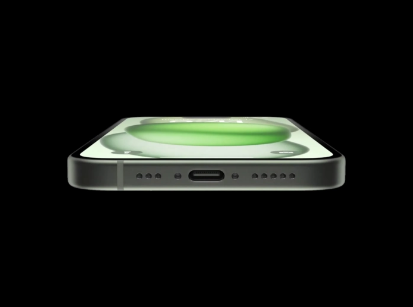
In terms of battery performance, the iPhone 15 boasts improved backup, as claimed by Apple, although the specific battery capacity remains undisclosed. Furthermore, the device supports MagSafe wireless charging of up to 15W and Qi Wireless charging of up to 7.5W. With the provided 20W fast charger, you can recharge the battery to 50% capacity in just 30 minutes.
The iPhone 14, on the other hand, delivers similar battery performance and retains the same fast wireless charging capabilities. The notable change here is the inclusion of the USB Type-C charging port in the Apple iPhone 15, a highly anticipated addition to the iPhone lineup.
Key takeaways:
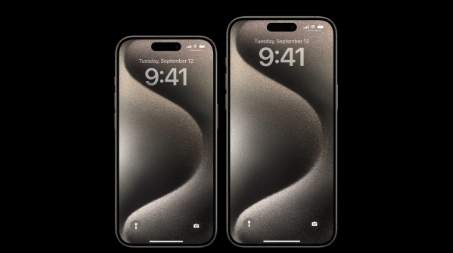
The standout feature of the iPhone 15 is undoubtedly the inclusion of the USB-C port, offering universal compatibility and convenience. However, it also brings several other compelling upgrades to the table, such as the impressive 48MP main camera, the introduction of Dynamic Island on its brighter display, a faster and more efficient processor, and a more comfortable design.
On the other hand, choosing the iPhone 14 allows for substantial savings while still providing a modern iPhone design, capable cameras, a proficient processor, and all the other benefits associated with the Apple ecosystem.
Ultimately, your decision may come down to your budget and whether you prioritize the enhanced camera capabilities and the convenience of USB-C connectivity. Both devices offer a solid Apple experience, and the choice depends on your specific needs and preferences.



